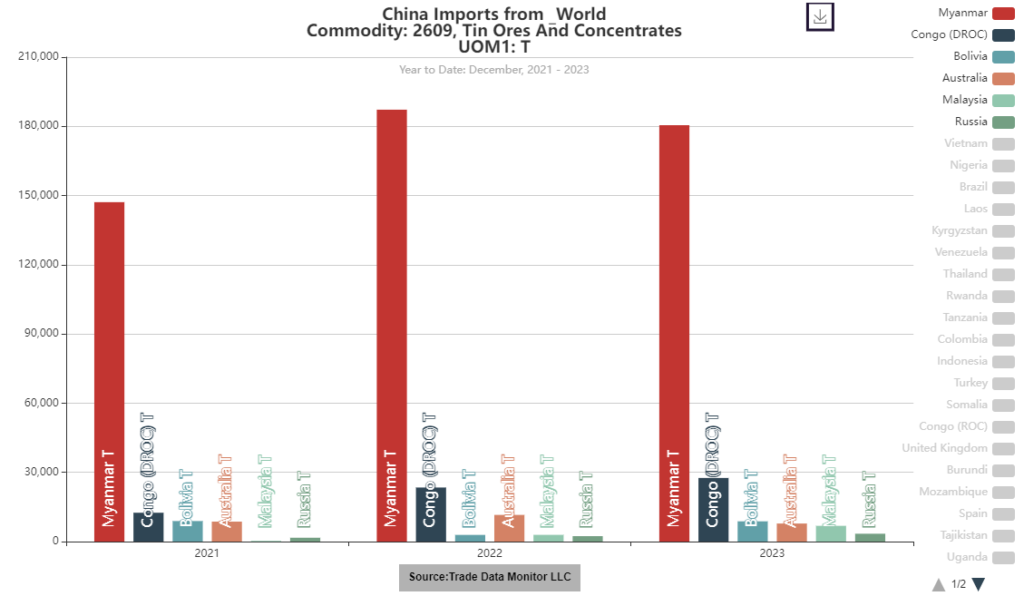Reuters | January 24, 2024 |

Tin man statue. (Stock Image)
The potential for a build-up of tin supplies this year is likely to put pressure on prices, but accelerating demand from the energy transition sector, including solar panels and electric vehicles, should support prices in the future.

Tin is used in circuit-board soldering for products like mobile phones and in electric cars and also in the manufacture of solar panels. Solder currently accounts for about half of global tin consumption.


Sluggish demand particularly from the semiconductor industry pushed the market into surplus for the past two years. This was despite a ban imposed last August on tin mining in Myanmar’s Wa region, which exports to China, the top producer of refined tin and also the biggest consumer.

The Wa state authorized a partial resumption of mining from January 3 “with the notable exception of the Man Maw mine area, which accounts for almost all tin production in the autonomous region”, according to the International Tin Association.

Tin prices on the London Metal Exchange (LME) have dropped 20% to around $26,500 a metric ton, since hitting a six-month high at $32,680 in January last year.
“The market may ease in 2024, especially if more supply comes through from Myanmar,” said Bank of America strategist Danica Averion.
“Against near-term headwinds, fundamentals look robust longer term on solar and electric vehicles.”
Bank of America estimates the tin market surplus at 5,800 tons last year and global consumption at 360,400 tons.
Myanmar accounted for 72% of China’s total imports of tin ores and concentrates last year, amounting to more than 180,000 tons, compared with a number above 187,000 tons or nearly 77% in 2022, according to Trade Data Monitor (TDM).

Short-term support for tin prices could come from Indonesia, the world’s second largest producer of refined tin after China.
“Over the last few years, we have seen Indonesian tin exports slump in the early months of the year due to export licence renewals,” Citi analysts said in a December note.
Longer term, investment in and sales of electric vehicles and solar panels will see tin consumption pick up pace.
“Tin demand from the green sector could more than double by 2030, potentially topping 70,000 tons per annum equivalent to a fifth of current consumption,” Averion said.
“This suggests that fundamentals are set to remain strong and the focus will be on the supply side and the extent to which producers will be able to meet this additional demand.”
(By Pratima Desai; Editing by Jane Merriman)
No comments:
Post a Comment